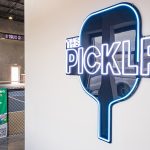Over 30 Chinese textile mills, many of which create clothing for major high-volume apparel brands and retailers including Target, Gap Inc., Levi Strauss and Company and H&M, are saving $14.7 million annually by adopting simple efficiency measures in their production processes, according to a new analysis by the Natural Resources Defense Council (NRDC).
These improvements have dramatically reduced the pollution generated by these mills, cutting up to 36 percent of water use and 22 percent of energy use per mill and a total of at least 400 tons of chemicals. The 33 mills are part of NRDC’s Clean By Design program, a global model for manufacturing sustainability that is working with major fashion retailers and designers to green the fashion supply chain industry-wide.
“Great fashion can also be green fashion. Although apparel manufacturing is among the largest polluting industries in the world, it doesn’t have to be,” said Linda Greer, Ph.D., NRDC senior scientist and director of Clean By Design. “There are enormous opportunities for the fashion industry to clean up its act while saving money, and Clean By Design offers low-cost, high-impact solutions to do just that.”
Over the past two decades, China has become the epicenter of global manufacturing, and it currently produces more than 50 percent of the world’s fabric, totaling more than 80 billion meters annually. As a result, the country is suffering from increasingly serious pollution problems while also contributing significant carbon into the atmosphere. Textile manufacturing, particularly the dyeing and finishing of fabric, is incredibly water and energy intensive as the process swallows up to 250 tons of water for every 10,000 meters of fabric produced and consumes 110 million tons of coal every year. The textile industry ranks as the third largest discharger of wastewater and the second largest user of chemicals in the country as well.
In the new report, The Textile Industry Leaps forward with Clean by Design: Bigger Profits Through Less Environmental Impact, NRDC identifies more than 200 improvement projects grounded in the program’s Ten Best Practices and undertaken in 2014 by 33 textile mills in Shaoxing and the Guangzhou area in China, two of the world’s textile manufacturing hot spots with the highest concentration of mills.
Clean By Design 2014 delivered:
- WATER: Saving up to 36 percent of water use and three-million tons of water, with an average 9 percent water savings at each mill and each of the top five mills reducing water consumption by more than 20 percent;
- ENERGY: Saving up to 22 percent of energy use and reducing the use of 61,000 tons of coal, which is mainly used to fire the boilers and make steam, with an average 6 percent energy reduction at each mill and each of the top five mills reducing energy use by 10 percent or more; reducing the use of 36 million kWh of electricity, with an average 4.2 percent electricity reduction and each of the top five mills reducing electricity by more than 6.5 percent;
- CHEMICALS: Reducing the use of at least 400 tons of chemicals , mostly dyes;
- MONEY: Financial savings totaling $14.7 million dollars in operating costs to participating mills with a payback time of only 14 months. The annual return per mill averaged $440,000, with the top five performing mills saving more than $800,000.
“Apparel brands can use their buying power to reduce the environmental footprint of their manufacturing while enhancing the bottom line,” said Greer. “Without a doubt, the 21st century conscious consumer rewards brands and retailers that embrace responsible manufacturing and value triple-bottom line solutions. This practical and replicable action plan provides a proven blueprint for companies to drive a sustainable transformation of the fashion industry.”
NRDC officially brought the Clean By Design program to scale in 2013, partnering with the International Finance Corporation (IFC), a member of the World Bank Group and the largest global development institution focused exclusively on the private sector. In 2015, Clean By Design will further expand, moving next to the greater Suzhou area, in Jiangsu Province, another Chinese city with a high concentration of textile mills. It will solicit broadened brand participation though alignment with the Sustainable Apparel Coalition, an association representing more than 40 percent of global apparel production.












